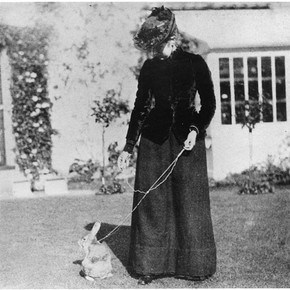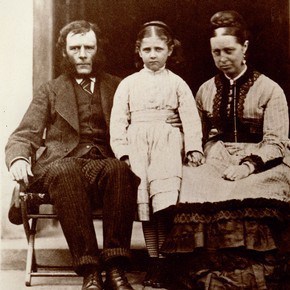Olga Núñez Miret's Blog: Author Translator Olga, page 108
December 26, 2013
Especial navideño. Autor invitado clásico, Francisco de Quevedo y Villegas
Como prometí estoy revisitando algunos de mis posts estas vacaciones y hoy, os traigo de nuevo a Quevedo, acérrimo, cínico, y romántico.
Spanish writer Francisco de Quevedo (1580–1645), with what appear to be “nose spectacles” (Photo credit: Wikipedia)
Como sabéis los viernes me gusta traer invitados a mi blog. Estaba pensando el otro día en escritores de mi país, del Siglo de Oro, y un gran favorito mío me vino a la cabeza. Quevedo. Todo un carácter, y me pareció que mucho de sus escritos, especialmente El Buscón son de lo más actual en tiempos de crisis. He encontrado muchos enlaces a páginas sobre él y en muchas podéis leer su obra gratuitamente. Evidentemente no es solo favorito mío sino de mucha gente.
Vale la pena leer su biografía en detalle, pero para no hacer el post excesivamente largo solo incluyo unos pocos detalles, pero podéis leer mucho más sobre él en los enlaces.
Francisco Gómez de Quevedo Villegas y Santibáñez Cevallos nació en Madrid, el 17 de septiembre de 1580 y murió en Villanueva de los Infantes, Ciudad Real, el 8 de Septiembre de 1645.
Hijo de Pedro Gómez de Quevedo y Villegas y de María Santibáñez su familia formaba parte de la aristocracia cortesana. Sus padres murieron siendo él muy joven y se educó en el colegio imperial de los Jesuitas y luego en las universidades de Alcalá de Henares y Valladolid donde fue un excelente estudiante, especialmente de teología y estudió varias lenguas (incluyendo el hebreo, el árabe, griego y latín, y varias lenguas modernas).
Se convirtió en protegido del duque de Osuna y lo acompañó a Sicilia como secretario de estado y parece que estuvo envuelto en varias intrigas políticas. A su vuelta en 1616 fue nombrado caballero de la Orden de Santiago. Cayó en desgracia (a la vez que el duque) acusado de participar en una conjuración en Venecia y lo desterraron a Torre de Juan de Abad, y luego estuvo preso en monasterios y en arresto domiciliario. Sus problemas también vinieron en parte por defender la propuesta de nombrar al Apóstol Santiado patrón de España (contra los Carmelitas que defendían a Santa Teresa de Jesús. Me recuerda a los líos que ha habido en Inglaterra con defensores de Jane Austen como personaje impreso en billetes ingleses, que por lo visto han recibido amenazas en Twitter. Los medios de comunicación cambian, la gente, no tanto.)
Cuando el rey Felipe IV sube al poder su suerte cambio algo. Su relación con el conde-duque de Olivares, inicialmente amistosa le ayudó a conseguir el título de secretario real. La historia de Santiago y Santa Teresa siguió y de nuevo lo desterraron por hablar demasiado (esta vez a un convento en León).
Volvió a la corte y se casó con Esperanza de Mendoza, una viuda amiga de la esposa del conde-duque, pero el matrimonio solo duró unos meses. Quevedo y el conde-duque empezaron a desconfiar el uno del otro (por lo visto había mucha corrupción en el gobierno, sí, las cosas, de verdad, cambian poco), Quevedo escribió algunas críticas que le valieron el destierro de nuevo al Convento de San Marcos en León en 1639 y allí estuvo encerrado en una pequeña celda hasta el 1643. Su salud sufrió por el encierro y se retiró a Torre de Juan de Abad y poco antes de morir se trasladó a Villanueva de los Infantes donde murió.
Quevedo aparte del título de Caballero de la Orden de Santiago también ostentaba el Señorío de la Torre de Juan de Abad (no sin controversia).
En cuanto a su obra Quevedo es (y fue en su época) muy conocido como poeta, cultivador del Conceptismo (como estilo opuesto al Culteranismo representado por Luís de Góngora. Digamos que las relaciones entre los dos poetas, que eran tan opuestos estilísticamente como en personalidad, nunca fueron muy amigables. El poema ‘Érase un hombre’ que incluyo después se sabe dedicado a Góngora. Góngora tampoco se quedó calladito, no os vayáis a pensar.), famoso también por sus traducciones, tratados políticos, obras filosóficas (La cuna y la sepultura, 1634), religiosas, y su novela picaresca Historia de la vida del Buscón, llamado don Pablos, que os recomiendo encarecidamente.
Yo personalmente siempre me incliné por el conceptismo, y la verdad es que pocos personajes encontraréis con vidas tan entretenidas (aunque como vimos con Cervantes, los escritores de entonces llevaban la aventura otro nivel) y con tanta despreocupación por las consecuencias de abrir la boca.
Quevedo ha sido personaje en obras de teatro, poemas, novelas históricas, y más recientemente, en las conocidas novelas de la serie Las aventuras del capitán Alatriste de Arturo Pérez-Reverte. Y en su adaptación cinematográfica.
Algunos Enlaces (Hay muchos):
http://en.wikipedia.org/wiki/Francisco_de_Quevedo
Naturalmente Wikipedia…Buena entrada
Original title page of Francisco de Quevedo’s El Buscón. (Photo credit: Wikipedia)
http://www.franciscodequevedo.org/
Incluye extensa biografía, poemas, las frases celebre que incluyo, e incluso versiones enteras del Buscón en varios formatos para descargar.
http://www.los-poetas.com/f/bioquev.htm
http://www.poemas-del-alma.com/francisco-de-quevedo.htm
Breve biografía y poemas
Y más poemas:
http://www.poesi.as/indexfq.htm
Y unas cuantas muestras…
Poemas:
ÉRASE UN HOMBRE A UNA NARIZ PEGADO (513)
SONETO
Érase un hombre a una nariz pegado,
érase una nariz superlativa,
érase una alquitara medio viva,
érase un peje espada mal barbado;
era un reloj de sol mal encarado.
érase un elefante boca arriba,
érase una nariz sayón y escriba,
un Ovidio Nasón mal narigado.
Érase el espolón de una galera,
érase una pirámide de Egito,
los doce tribus de narices era;
érase un naricísimo infinito,
frisón archinariz, caratulera,
sabañón garrafal, morado y frito.
AMOR CONSTANTE MÁS ALLÁ DE LA MUERTE (Uno de mis poemas favoritos de todos los tiempos)
SONETO
Cerrar podrá mis ojos la postrera
sombra que me llevare el blanco día,
y podrá desatar esta alma mía
hora a su afán ansioso lisonjera;
mas no, de esotra parte, en la ribera,
dejará la memoria, en donde ardía:
nadar sabe mi llama la agua fría,
y perder el respeto a ley severa.
Alma a quien todo un dios prisión ha sido,
venas que humor a tanto fuego han dado,
medulas que han gloriosamente ardido
su cuerpo dejará, no su cuidado;
serán ceniza, mas tendrá sentido;
polvo serán, mas polvo enamorado.
PODEROSO CABALLERO ES DON DINERO
(Y no me digáis que no podéis pensar en gente, o profesiones enteras, a las que dedicar este poema)
Madre, yo al oro me humillo,
Él es mi amante y mi amado,
Pues de puro enamorado
Anda continuo amarillo.
Que pues doblón o sencillo
Hace todo cuanto quiero,
Poderoso caballero
Es don Dinero.
Nace en las Indias honrado,
Donde el mundo le acompaña;
Viene a morir en España,
Y es en Génova enterrado.
Y pues quien le trae al lado
Es hermoso, aunque sea fiero,
Poderoso caballero
Es don Dinero.
Son sus padres principales,
Y es de nobles descendiente,
Porque en las venas de Oriente
Todas las sangres son Reales.
Y pues es quien hace iguales
Al rico y al pordiosero,
Poderoso caballero
Es don Dinero.
¿A quién no le maravilla
Ver en su gloria, sin tasa,
Que es lo más ruin de su casa
Doña Blanca de Castilla?
Mas pues que su fuerza humilla
Al cobarde y al guerrero,
Poderoso caballero
Es don Dinero.
Es tanta su majestad,
Aunque son sus duelos hartos,
Que aun con estar hecho cuartos
No pierde su calidad.
Pero pues da autoridad
Al gañán y al jornalero,
Poderoso caballero
Es don Dinero.
Más valen en cualquier tierra
(Mirad si es harto sagaz)
Sus escudos en la paz
Que rodelas en la guerra.
Pues al natural destierra
Y hace propio al forastero,
Poderoso caballero
Es don Dinero.
ENSEÑA COMO TODAS LAS COSAS AVISAN DE LA MUERTE
(Sin comentarios)
Miré los muros de la Patria mía,
Si un tiempo fuertes, ya desmoronados,
De la carrera de la edad cansados,
Por quien caduca ya su valentía.
Salíme al Campo, vi que el Sol bebía
Los arroyos del hielo desatados,
Y del Monte quejosos los ganados,
Que con sombras hurtó su luz al día.
Entré en mi Casa; vi que, amancillada,
De anciana habitación era despojos;
Mi báculo más corvo y menos fuerte.
Vencida de la edad sentí mi espada,
Y no hallé cosa en que poner los ojos
Que no fuese recuerdo de la muerte.
EPÍSTOLA SATÍRICA Y CENSORIA CONTRA LAS COSTUMBRES PRESENTES DE LOS CASTELLANOS, ESCRITA A DON GASPAR DE GUZMÁN, CONDE DE OLIVARES, EN SU VALIMIENTO
No he de callar por más que con el dedo,
ya tocando la boca o ya la frente,
silencio avises o amenaces miedo.
¿No ha de haber un espíritu valiente?
¿Siempre se ha de sentir lo que se dice?
¿Nunca se ha de decir lo que se siente?
Hoy, sin miedo que, libre, escandalice,
puede hablar el ingenio, asegurado
de que mayor poder le atemorice.
En otros siglos pudo ser pecado
severo estudio y la verdad desnuda,
y romper el silencio el bien hablado.
Pues sepa quien lo niega, y quien lo duda,
que es lengua la verdad de Dios severo,
y la lengua de Dios nunca fue muda.
(Este poema es mucho más largo y actual y lo podéis leer completo, aquí)
http://www.poesi.as/indx1001.htm
CITAS Y FRASES CÉLEBRES:
Cuando decimos que todo tiempo pasado fue mejor, condenamos el porvenir sin conocerlo
____________________________
Lo mucho se vuelve poco con desear un poco más.
____________________________
El agradecimiento es la parte principal de un hombre de bien.
____________________________
No es dichoso aquel a quien la fortuna no puede dar nada más, sino aquel a quien no puede quitar nada.
____________________________
El que quiere en esta vida todas las cosas a su gusto, tendrá muchos disgustos en su vida.
____________________________
Ningún vencido tiene justicia, si lo ha de juzgar su vencedor.
____________________________
El que parece sabio entre los tontos parece tonto entre los sabios.
____________________________
La hipocresía exterior, siendo pecado en lo moral, es grande virtud política.
____________________________
El mayor despeñadero, la confianza.
____________________________
Por nuestra codicia lo mucho es poco; por nuestra necesidad lo poco es mucho.
____________________________
Una sola piedra puede desmoronar un edificio.
____________________________
Los que de corazón se quieren sólo con el corazón se hablan.
____________________________
Muchos son buenos si se da crédito a los testigos; pocos, si se toma declaración a su conciencia.
____________________________
La misma tristeza inventa por sí misma muchos motivos de sentimiento.
____________________________
No conviene mostrar la verdad desnuda, sino en camisa.
____________________________
Más fácilmente se añade lo que falta que se quita lo que sobra.
____________________________
La mayor señal de ser bueno es ni temer ni deber, y la mayor de la maldad es ni temer ni pagar.
____________________________
Mejor vida es morir que vivir muerto.
____________________________
Vive para ti solo, si pudieres; pues sólo para ti mueres, si mueres.
____________________________
El amigo ha de ser como la sangre, que acude luego a la herida sin esperar a que le llamen.
___________________________
La envidia va tan flaca y amarilla porque muerde y no come.
____________________________
El valiente tiene miedo del contrario; el cobarde, de su propio temor.
____________________________
Las palabras son como monedas, que una vale por muchas como muchas no valen por una.
____________________________
Nunca mejora su estado quien muda solamente de lugar y no de vida y de costumbres.
_________________________
Siempre se ha de conservar el temor, más jamás se debe mostrar.
____________________________
El ánimo que piensa en lo que puede temer, empieza a temer en lo que puede pensar.
__________________________
Aquel hombre que pierde la honra por el negocio, pierde el negocio y la honra.
____________________________
El consejo, bueno es; pero creo que es de las medicinas que menos se gastan y se gustan.
____________________________
No es sabio el que sabe donde está el tesoro, sino el que trabaja y lo saca.
____________________________
Ruin arquitecto es la soberbia; los cimientos pone en lo alto y las tejas en los cimientos.
____________________________
Si quieres que te sigan las mujeres, ponte delante.
____________________________
Todos los que parecen estúpidos, lo son y, además también lo son la mitad de los que no lo parecen.
____________________________
Nadie ofrece tanto como el que no va a cumplir.
____________________________
El amor es fe y no ciencia.
____________________________
Si haces bien para que te lo agradezcan, mercader eres, no bienhechor; codicioso, no caritativo.
____________________________
Sólo el que manda con amor es servido con fidelidad.
____________________________
Lo que en la juventud se aprende, toda la vida dura.
____________________________
Todos deseamos llegar a viejos; y todos negamos que hemos llegado.
____________________________
Hay libros cortos que, para entenderlos como se merecen, se necesita una vida muy larga.
____________________________
Donde hay poca justicia es un peligro tener razón.
____________________________
El amor es la última filosofía de la tierra y del cielo.
____________________________
El general ha de ser considerado, y el soldado obediente.
____________________________
Quien deja vivo al ofendido, ha de temer siempre a la venganza.
____________________________
Menos mal hacen los delincuentes que un mal juez.
____________________________
La posesión de la salud es como la de la hacienda, que se goza gastándola, y si no se gasta, no se goza.
____________________________
El ocio es la pérdida del salario.
____________________________
Bien puede haber puñalada sin lisonja, mas pocas veces hay lisonja sin puñalada.
____________________________
Más fácil es escribir contra la soberbia que vencerla.
____________________________
Apocarse es virtud, poder y humildad; dejarse apocar es vileza y delito.
____________________________
El exceso es el veneno de la razón.
Gracias por leer y perdonadme que el post fuese tan largo hoy pero es amor literario…
Si os ha gustado, comentad, compartid y acordaos de haced CLIC! Y leed…mucho.
Firma de Francisco de Quevedo (Photo credit: Wikipedia)








December 23, 2013
Feliz Navidad. Y Charles Dickens

Christmas in Barcelona 2013
Hola a todos.
Supongo que habréis notado que mañana es Navidad. Y si no, ya me contaréis dónde estáis y me vengo el año que viene. Si lo celebráis, espero que lo paséis bien y tengáis la oportunidad de disfrutar la compañía de vuestra familia. Si os toca trabajar (porque no todo está cerrado en Navidades, y los servicios de emergencia siguen al pie del cañón), gracias y espero que luego os toque un merecido descanso.
Si no las celebráis os deseo mucha tranquilidad y que os sea leve.
Y por si acaso, os dejo un enlace en inglés y en castellano a ‘A Christmas Carol’ de Charles Dickens, gratis… Al menos hay fantasmas.
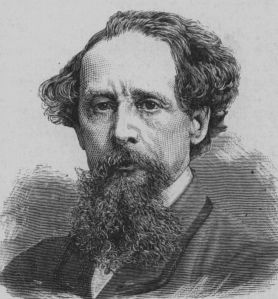
Charles Dickens, a former resident of Lant Street. (Photo credit: Wikipedia)
Besos y gracias por leer:
Olga
A Christmas Carol:
http://www.amazon.com/A-Christmas-Carol-ebook/dp/B0084BMUFA/
En la biblioteca Cervantes:
http://www.cervantesvirtual.com/obra/el-cantico-de-navidad/
Related articles
Bah! Humbug! A Christmas Carol by Charles Dickens narrated by Tom Baker (fictionfanblog.wordpress.com)
Feliz Navidad, Bon Nadal and Happy Chris (oncorosell.wordpress.com)








Christmas Selection. A Christmas Carol and Charles Dickens.
As tomorrow is Christmas, I thought I’d bring you the guest classic author post I wrote about Charles Dickens to give you a chance to read his Christmas Carol if you hadn’t yet, or even listen to it.
Have a great Christmas if you celebrate it, and if you don’t, have a peaceful time. And to those of you who work tomorrow, Thanks!
Love:

Christmas in Barcelona 2013
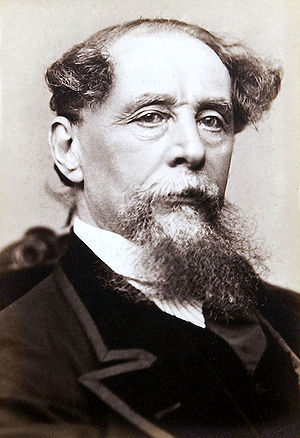
Charles Dickens (1812-1870) (Photo credit: Wikipedia)
Yes, it’s Friday and I bring you another classic. Not sure one should say that there are classics that are more classics, but indeed you’d be hard pressed to find anybody who hasn’t heard of Charles Dickens , or his stories. Even if you haven’t read them, you’ll know what they are about, will have watched some of the adaptations (not only BBCs, but movies, etc), or surely watched the musical ‘Oliver!’ based on his novel Oliver Twist. Considered the Victorian writer per excellence, he’s forever popular.
Biography:
There are very great and detailed biographies available, not only online, but also, of course, in printed form. I leave you a number of links to sites where you can read more about him. Only a few details:
He was born in Portsmouth on 7 February 1812, to John and Elizabeth Dickens. He went to school briefly but as his father was imprisoned for bad debt when he was very young (around 9) this cut his formal education short and the whole family (debts and ending up in prison were quite common at the time…Some things don’t change) was sent to Marshalsea, although Charles, instead, went to work in a blacking factory and had to bear appalling conditions. After 3 years he went back to school but he was marked by these experiences and they’ve been reflected in many of his works.
He began his writing career as a journalist and he worked in a variety of journals. In 1833 he became parliamentary journalist and three years later married Catherine Hogarth, the daughter of an editor who had been publishing some of his sketches. Shortly after he started publishing ‘Pickwick Papers’ and his success continued.
As we all know he wrote many novels (see links below), and quite a few of them in a serialised format, publishing them in periodicals weekly. He was a model for current authors keen on getting feedback and interacting with the public, as it is known that he would modify characters and story plots according to the public responses to his stories.
He also drew inspiration from his life and people he met along the way and there is a wealth of information on the real life basis for some of his best known and loved (or hated) characters.
He didn’t only write novels, but also an autobiography, periodicals, travel books, plays, and run charitable organisations.
Dickens became well-known and loved in the lectures circle and the travelled twice to the United States (where he did readings of his own books but also talked against slavery), to Italy (with fellow writers Augustus Egg and Wilkie Collins) and toured the UK on many occasions.
He left his wife in 1858 (they had 10 children) and maintained relationships with his mistress, actress Ellen Ternan (who was many years his junior). He died of a stroke in 1870 and he is buried in the Poet’s Corner at Westminster Abbey.
Links:
CharlesDickensMuseum
BBC Biography page:
http://www.bbc.co.uk/history/historic_figures/dickens_charles.shtml
Wikipedia, of course:
http://en.wikipedia.org/wiki/Charles_dickens
The Literature Network:
http://www.online-literature.com/dickens/
The Complete Works of Charles Dickens. It has links to read his works free on-line.
http://www.dickens-literature.com/
Entry on Charles Dickens at the New World Encyclopaedia. Good links:
http://www.newworldencyclopedia.org/entry/Charles_Dickens
Biography.com (it even has videos!)
http://www.biography.com/people/charles-dickens-9274087
Imdb page with information on movie and TV versions. He is listed as writer of 338 titles!
Links to FREE works (see also above):
Free audiobook of A Christmas Carol
http://librivox.org/a-christmas-carol-by-charles-dickens/
Great expectations:
http://www.amazon.com/Great-Expectations-ebook/dp/B0082SWC30/
A Tale of Two Cities:
http://www.amazon.com/Tale-Two-Cities-ebook/dp/B004EHZXVQ/
Oliver Twist (not currently available…Might be soon. Versions for very little available):
http://www.amazon.com/Oliver-Twist-ebook/dp/B000JQUT8S/
Bleak House:
http://www.amazon.com/Bleak-House-ebook/dp/B00847G1PY/
David Copperfield:
http://www.amazon.com/David-Copperfield-ebook/dp/B004GHNIQQ/
A Christmas Carol:
http://www.amazon.com/A-Christmas-Carol-ebook/dp/B0084BMUFA/
http://www.amazon.com/The-Old-Curiosity-Shop-ebook/dp/B0082ZEKSI/
Little Dorrit:
http://www.amazon.com/Little-Dorrit-ebook/dp/B0083ZY2LC/
Nicholas Nickleby:
http://www.amazon.com/Nicholas-Nickleby-ebook/dp/B000JQV5MM/
Martin Chuzzelwit:
http://www.amazon.com/Martin-Chuzzlewit-ebook/dp/B0084BZU48/
And something a bit different. I normally only add free links on the post about classical authors but…I could not resist. I’ve heard this audiobook of ‘A Christmas Carol’ by Alan Cooke (a.k.a. Wild Irish Poet, Emmy award winner, writer, and a true master of voices, who’s also recorded an audio for me that I hope will be available soon) and thought I’d leave you a link. I think it brings it to life and I truly love it. The webpage also offers you a sample so have a listen and see.
http://wildirishpoet.com/?page_id=279
Thank you for reading, and if you enjoyed it, don’t forget to like it, comment, share it, and of course, CLICK!
Signature of Charles Dickens (Photo credit: Wikipedia)
Related articles
Charles Dickens Quiz (go4quiz.com)
A Christmas Carol: a novel by Charles Dickens (year8ise0mackay.wordpress.com)
The Historic Meeting Between Dickens and Dostoevsky Revealed as a Great Literary Hoax (openculture.com)
Charles Dickens: The Continuing Victorian Narrative (cusch.wordpress.com)
Related articles
A Christmas Carol by Charles Dickens (ashburnteenbookreview.wordpress.com)
A Christmas Carol: The Book Dickens’ Publishers Didn’t Want to Risk (rebeccaromney.wordpress.com)








December 19, 2013
Un regalo de de Navidad. ‘A World of Joy’ (Un mundo de alegría)
Hola a todos:
Os prometí que durante las vacaciones navideñas os traería una selección de mis posts, y hoy os iba a dejar uno de algún clásico para que tengáis algo que leer estos días (aunque sospecho que la mayoría tendréis bastantes lecturas atrasadas y muchas otras cosas que hacer), pero me pareció mejor dejaros información sobre una antología de historias navideñas, en inglés, que ha publicado uno de los grupos con los que estoy asociada, ASMSG (Authors’ Social Media Support Group, Grupo de apoyo de autores en medios sociales) A World of Joy que contiene una de mis historias ‘Christmas On-Call’ (Navidades de guardia), que no es una historia demasiado típica (creo). El libro es gratuito, y hay un montón de historias de autores independientes con mucho talento, así que si leéis inglés, andais practicando, o conocéis a alguien a quién le pueda interesar, les podéis hacer un regalo.

A World of Joy, Christmas stories by Grey Mouse Publications
Aquí está el enlace en Smashwords, desde donde podéis descargar el libro en todos los formatos:
http://www.smashwords.com/books/view/383338
El grupo lleva un tiempo publicando antologías de lo más variado (de poesía, horror, ciencia-ficción, romance….) todas gratuitas, así que os dejo el enlace al grupo:
Y aquí el enlace a la página con sus libros:
http://asmsg.weebly.com/grey-mouse-books.html
Gracias por leer, y si os ha gustado o conocéis a alguien a quién le pueda gustar, dadle al me gusta, comentad, compartid, y sobre todo, haced CLIC!
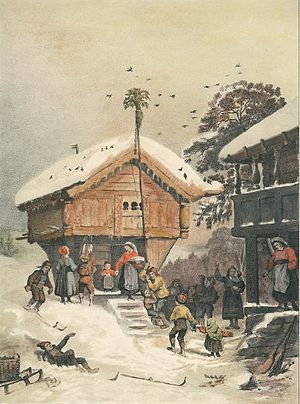
A Norwegian Christmas, 1846 painting by Adolph Tidemand. (Photo credit: Wikipedia)
Y por si os apetece algo menos navideño, os dejo el enlace a mi historia ‘Carne de cañón’ en Wattpad. Ahora están las 9 partes disponible. El libro de ‘Una vez psiquiatra…’ del cual esta historia es la primera, con un poco de suerte estará disponible en enero. Espero que os guste!
http://www.wattpad.com/28235987-una-vez-psiquiatra-carne-de-ca%C3%B1%C3%B3n








A Christmas Present. A World of Joy from ASMSG authors
Hi all:
As you know I had promised revisiting some of my old posts over Christmas. I was going to repost some classics so you could enjoy a free read over Christmas, but then I thought maybe you’d fancy a seasonable read, and brand new too.

A World of Joy, Christmas stories by Grey Mouse Publications
You might remember I belong and follow a number of authors’ groups. One of them ASMSG (Authors’ Social Media Suppport Group) has been publishing a number of anthologies of stories by their members, including a general mixed-genre short-stories one, a romance one, poetry, science-fiction, horror… and the latest one, ‘A World of Joy’, and anthology of Christmas short stories. My story ‘Christmas On-Call’ is there (yes, it is not your standard Christmas story, you’ve guessed right) and those of many other talented writers. The anthology (and all the others published by the group) are free, so go and get them!
This is the link in Smashwords for ‘A World of Joy’:
http://www.smashwords.com/books/view/383338
This is the webpage for ASMSG:
And here you can find all the FREE anthologies by the group:
http://asmsg.weebly.com/grey-mouse-books.html
Thanks for reading and if you’ve enjoyed it I hope you like, share, comment, and especially CLICK! And Merry Christmas!

A Norwegian Christmas, 1846 painting by Adolph Tidemand. (Photo credit: Wikipedia)
Related articles
Knock, knock: it’s just me #Poetry #ASMSG (sueshan123blog.wordpress.com)
FREE and Beautiful: A World of Romance (raodum.wordpress.com)
A WORLD OF VERSE by ASMSG authors (andyszpuk.wordpress.com)
A World of Possibility: A Collection of Short stories by the authors of ASMSG (raodum.wordpress.com)








December 16, 2013
Especial de Navidades. Revisitando ‘la máscara de oxígeno’

Navidad (Photo credit: Lumiago)
Como os prometí, estas Navidades intentaré traeros algunos de los posts que he publicado durante el año. En esta época que algunas personas encuentran particularmente difícil por sus circunstancias personales o por tener que estar ayudando y cuidando a otros, me pareció oportuno revisitar este post. Espero que os guste.
La máscara de oxígeno:
Puede que recordéis (o no, no creo que mis posts estén entre las cosas más memorables de las vidas de todo el mundo) que publiqué unos comentarios, con el título ‘Sabios (?) Consejos’ hace unas semanas.
Por supuesto, como suele pasar con estas cosas, al poco de publicarlo se me ocurrió otra cosa que debería haber mencionado. El sentido del humor. En mi opinión si uno intenta tomarse las cosas como vienen y es capaz de reírse de sí mismo y de ver el lado divertido de las cosas eso ayuda mucho a mantenerse cuerdo. De hecho tiene mucha relación con mi sugerencia de intentar ver las cosas con perspectiva, a distancia, en lugar de tomárselo todo personalmente. El humor es una de las estrategias a nuestro alcance para conseguirlo. Las pequeñas tragedias de la vida, vistas a través de un prisma humoroso, pueden ser divertidas. Recuerdo que hace tiempo (al menos 2 ó 3 años) me caí por las escaleras de mi casa (no puedo echarle la culpa a nada o nadie) y aterricé al pie de la escalera. No había nadie más en casa, pero por motivos desconocidos lo primero que se me pasó por la cabeza fue que habría sido divertido si alguien hubiera estado allí para verlo. Y ahí estaba yo, al pie de las escaleras, más sola que la una, y partiéndome de risa. Me torcí el tobillo y más tarde descubrí que tenía un escape en el radiador (sospecho que le debí pegar un buen porrazo al caerme) pero me reí muy a gusto.
Hoy estaba de charla (o mejor dicho, intercambiando correos) con otra autora y buena amiga. Y estábamos hablando de como a veces, cuando nos dedicamos a cuidar de otros y a apoyarlos, podemos agotarnos, física y mentalmente, y acabar enfermos e incapaces de funcionar. Pero si no nos dedicamos en cuerpo y alma a cuidar a los demás nos sentimos culpables. Le dije que yo siempre le digo a mis pacientes que si no estamos bien de salud y nos cuidamos nosotros no tendremos la suficiente resistencia como para cuidar de los demás. Y le recomendé que pensara en las instrucciones que nos repiten cada vez que vamos en avión (y a las que la mayoría de las veces no les hacemos mucho caso), sobre lo que hay que hacer en caso de emergencia. Cuando hablan de un incidente donde la cabina pierde presión y las máscaras de oxígeno se descuelgan del compartimento encima de nuestros asientos, siempre, siempre, no recuerdan que tenemos que ponernos nuestra máscara antes de intentar ayudar a los demás, porque si no, no estaremos en condiciones de ayudar a nadie. Si nos agotamos eso no ayudará ni a los que cuidamos ni a nosotros mismos. No os sintáis culpables por no ser supermujer o superman. Nunca olvidéis que debéis cuidaros de vosotros mismos. Es la única forma en que podréis seguir cuidando de los demás.
Gracias por leer y si os ha gustado o lo habéis encontrado útil, no os olvidéis de compartir!
Os dejo el enlace a mi otro articulo.
http://olganm.wordpress.com/2013/04/09/sabios-consejos-y-un-nuevo-video/








Christmas Special. Revisiting the Oxygen Mask and Pearls of Wisdom

Xmas (Photo credit: iurikothe)
As I promised, for Xmas I’m revisiting some of my posts through the year, and I thought during this time of the year it would be good to think about those who might find the season stressful, or have to support others in difficult situations. So I bring you the Oxygen Mask again. I hope you enjoy it. Thanks!
The Oxygen Mask

English: A-9 oxygen mask with B-6 winter helmet, WW2 vintage (Photo credit: Wikipedia)
You might (or might not, I don’t believe my posts are amongst the most memorable things in everybody’s lives) remember I posted a few ideas, or rather, some advice, under the title ‘Pearls of Wisdom’ weeks (probably months) ago.
Of course, as it tends to happen with these things, shortly after publishing it I thought of something else I should have mentioned. Humour. I do think that trying to take things on your stride and being able to laugh at yourself and see the humorous side of things helps immensely when dealing with life. It is related to one of the ideas I suggested, trying to see things from a distance, and gain perspective. Humour is one of the strategies we have in our hands to achieve that. The small tragedies of life, seen through a humorous prism, can indeed be very funny. I remember I fell downstairs at home (I can’t blame it on anything in particular) and landed at the bottom of the stairs. There was nobody else in the house, but for unknown reasons the first thought that came to my head was that it would have been quite funny if anybody had been there to see it. And there I was, at the bottom of the stairs, by myself, laughing my head off. I twisted my ankle in the process and later discovered my radiator had sprung a leak (I suspect because I must have hit it during the fall) but it was a good laugh.
I was chatting (or rather exchanging e-mails) with a fellow author and good friend today. And we were talking about how sometimes, in the process of caring for others and supporting them, we can completely exhaust ourselves, both physically and mentally, and end up ill and unable to function. But if we don’t go all out in our care and support we feel guilty. I told her that I always tell my patients we can’t look after others if we don’t have a minimum of health ourselves and don’t look after our own needs. And I advised her to think about the training they forever repeat (and we hardly ever listen to) in planes, about what to do in emergencies. When they talk about an incident where the cabin gets depressurised and the Oxygen masks drop from the compartment above our heads they always, always, remind us that we must put our own mask on before we try and help others, because if we don’t, we won’t be in a fit state to help anybody else. Running ourselves to the ground will not help those we care for or ourselves in the long run. Don’t feel guilty for not being superwoman or superman. Never forget to look after yourself. That’s the only way you can carry on looking after others.
Thank you for reading and if you’ve liked it or found it useful, please share!
Related articles
Putting on your Oxygen Mask (whathasbeenwillbe.wordpress.com)
http://olganm.wordpress.com/2013/04/09/pearls-of-wisdom-and-amazing-video/








December 12, 2013
Autora Clásica Invitada. Gertrudis Gómez de Avellaneda. Poeta, novelista, dramaturga y romántica
Como todos los viernes (aunque a partir de la semana que viene y durante las Navidades revisitaré algunos de mis post previos) os traigo un autor (hoy autora) invitada: Gertrudis Gómez de Avellaneda. Como recordaréis hablamos de ella en el post de Emilia Pardo Bazán, así que me pareció una buena ocasión para traerla de visita.

English: Gertrudis Gómez de Avellaneda (Photo credit: Wikipedia)
Como siempre os ofrezco una breve biografía (con enlaces para que leáis más si os apetece), unas breves muestras de sus poemas (algunos son demasiados largos para un post), y enlaces sobre su vida y obras (gratis en la Biblioteca Digital Cervantes).
Biografía:
Gertrudis Gómez de Avellaneda nació en Puerto Príncipe (Cuba) el 23 de Marzo de 1814 (aunque en su autobiografía menciona el 1816). Su padre era el capitán de barco Manuel Gómez de Avellaneda, y su madre Felisa de Arteaga. Durante su juventud, y por motivos de salud, se trasladó a Santiago de Cuba, después de negarse a casarse. En Abril de 1836 partió con su familia y después de una estancia en Burdeos se instalaron primero en La Coruña y de allí fueron a Sevilla. En Cádiz empieza a escribir en La Aureola, con el seudónimo de La Peregrina.
En 1839 conoce a Ignacio de Cepeda, un estudiante de Leyes del que se enamora apasionadamente, y al que dedicó cartas y su autobiografía. En literatura admiraba a Mme. de Stael, Chateaubriand, Walter Scott, y a Quintana y Lista.
Se traslada a Madrid en el 1840, donde publica sus primeros poemas (y los lee en el Liceo). También empieza a escribir teatro y en 1844 se estrena Munio Alfonso, en Madrid. Otra obra destacada es su novela Sab (1841) que fue la primera novela abolicionista (antes que La cabaña del tío Tom).
En 1844 conoce al poeta Gabriel García Tassara y establece una relación difícil con él. Queda embarazada, soltera, y en Abril de 1845 tiene a su hija María (ella la llama Brenhilde), que nace enfermiza y muere a los 7 meses. Escribe cartas a Tassara para convencerlo de que vaya a ver a su hija antes de que muera pero él se niega.
Ese mismo año obtiene dos primeros premios de la competencia poética del Liceo Artístico y Literario de Madrid y a partir de entonces empieza a ser reconocida.
En 1846 se casa con Pedro Sabater (o según otras fuentes Diciembre del 1845). Su marido enferma al poco de casarse y aunque viajaron a París para intentar encontrar una curación, muere en Burdeos. Se recluye en el convento de Nuestra Señora de Loreto donde escribe algunos tratados religiosos, y dos elegías dedicadas a su marido.
En 1850 publica la segunda edición de sus poesías. A pesar del apoyo de muchos escritores de la época (Bécquer, Zorrilla, Caballero, Espronceda), cuando se presenta candidata a la Real Academia Española, animada por sus éxitos, en 1854, escogen a un hombre (¡que sorpresa!).
En 1856 se casa con don Domingo Verdugo, un político importante, al que hieren durante uno de los estrenos de una de sus obras, y se van a vivir a Cuba en 1859, con la esperanza de que el clima le ayude a recuperarse. Allí la reciben con todos los honores (la llaman afectuosamente Tula), la declaran poetisa nacional. Dirige una revista en Cuba por unos seis meses y vuelve a Madrid en 1863 (después de visitar Nueva York, Londres y París). Su marido muere ese mismo año y Avellaneda se vuelca aún más en la religión y en una vida espartana.
Muere en Sevilla el 1 de Febrero de 1873 y está enterrada en el cementerio de San Fernando.
Su poesía temprana se ha comparado a la de Elizabeth Barrett Browning por su análisis de los estados de ánimo psicológicos de los enamorados, aunque en sus últimos años se centró más en temas religiosos.
Aparte de Sab, publicó otras novelas conocidas, Dos mujeres (contra el matrimonio) y Guatimozín, novela histórica ambientada en el México de la época de la conquista. Su otra obra narrativa es menos conocida.
En cuanto a su obra teatral, muchas de sus obras fueron de corte histórico (Leoncia, la ya mencionada Munio Alfonso, el príncipe de Viana y Egilona). Las piezas teatrales con las que obtuvo más fama son de tema religioso: Saúl y Baltasar. También obtuvo bastante éxito una comedia, La hija de las flores.
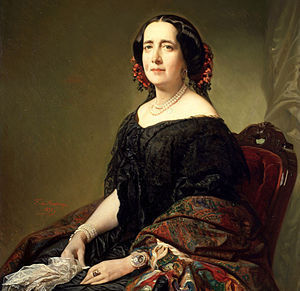
Español: Retrato de Gertrudis Gómez de Avellaneda por Federico Madrazo y Kuntz, 1857 (Photo credit: Wikipedia)
Poemas:
A WASHINGTON
No en lo pasado a tu virtud modelo,
ni copia al porvenir dará la historia,
ni otra igual en grandeza a tu memoria
difundirán los siglos en su vuelo.
Miró la Europa ensangrentar su suelo
al genio de la guerra y la victoria…
pero le cupo a América la gloria
de que al genio del bien le diera el cielo.
Que audaz conquistador goce en su ciencia,
mientras al mundo en páramo convierte,
y se envanezca cuando a siervos mande;
¡mas los pueblos sabrán en su conciencia
que el que los rige libres sólo es fuerte,
que el que los hace grandes sólo es grande!
LAS CONTRADICCIONES
No encuentro paz, ni me permiten guerra;
De fuego devorado, sufro el frío;
Abrazo un mundo, y quédome vacío;
Me lanzo al cielo, y préndeme la tierra.
Ni libre soy, ni la prisión me encierra;
Veo sin luz, sin voz hablar ansío;
Temo sin esperar, sin placer río;
Nada me da valor, nada me aterra.
Busco el peligro cuando auxilio imploro;
Al sentirme morir me encuentro fuerte;
Valiente pienso ser, y débil lloro.
Cúmplese así mi extraordinaria suerte;
Siempre a los pies de la beldad que adoro,
Y no quiere mi vida ni mi muerte.
AL PARTIR
¡Perla del mar! ¡Estrella de occidente!
¡Hermosa Cuba! Tu brillante cielo
la noche cubre con su opaco velo,
como cubre el dolor mi triste frente.
¡Voy a partir!… La chusma diligente,
para arrancarme del nativo suelo
las velas iza, y pronta a su desvelo
la brisa acude de tu zona ardiente.
¡Adiós, patria feliz, edén querido!
¡Doquier que el hado en su furor me impela,
tu dulce nombre halagará mi oído!
¡Adiós!… Ya cruje la turgente vela…
el ancla se alza… el buque, estremecido,
las olas corta y silencioso vuela.
Enlaces:
Información:
Wikipedia (es):
http://es.wikipedia.org/wiki/Gertrudis_G%C3%B3mez_de_Avellaneda
Los poetas:
http://www.los-poetas.com/d/bioave.htm
escritores.org:
https://www.escritores.org/biografias/366-gertrudis-gomez-de-avellaneda
http://www.cervantesvirtual.com/servlet/SirveObras/12032742128937162432435/p0000019.htm
Página de la autora en Cervantes virtual:
http://www.cervantesvirtual.com/FichaAutor.html?Ref=280
escritoras.com:
http://escritoras.com/escritoras/Gertrudis-Gomez-de-Avellaneda
Entrada en la enciclopedia Británica (en inglés):
http://www.britannica.com/EBchecked/topic/238207/Gertrudis-Gomez-de-Avellaneda
Obras:
En Biblioteca virtual Cervantes:
http://www.cervantesvirtual.com/bib/bib_autor/gomezavellaneda/pcuartonivel3599.html?conten=obra
Un artículo (en inglés) sobre subversión en su novela Sab
http://www.decimononica.org/wp-content/uploads/2013/01/Barreto_V3.1.pdf
En Amazon hay varias obras suyas en formato electrónico gratis, pero parecen ser la versión de la Biblioteca Cervantes, que está más arriba.
Gracias por leer, y si os ha gustado, por favor, darle al me gusta, comentad, compartid y sobre todo, haced CLIC (¡que es gratis!).
La semana que viene, especial Navideño, con selección de posts del año.








Guest classic author: Beatrix Potter. Children’s books, rabbits and the Lakes.
Today as all Fridays (although we’ll take a break to bring you some Christmas specials during the festive period) I bring you a guest author. This time is a classic that I think most of us will be familiar with (and especially with her characters): Beatrix Potter.
There is plenty of information about her on the internet. I leave you a short biography and links to more information about her and her works.
Biography:
Helen Beatrix Potter was born on the 28th July 1866 in London (South Kensington). Both her grandparents had been industrialists in the cotton business (in the Manchester area) and her parents were quite wealthy and followers of the Unitarian faith. Her father was a barrister and amateur photographer and her mother enjoyed embroidery and drawing. They were both interested in the arts and encouraged Beatrix and her younger brother, Walter Bertram, in the pursuit of their artistic interests. She was educated at home by private governesses, and she and her brother spent time studying, drawing and taking art lessons and observing and playing with their pet animals. The best know of her governesses, Annie Moore, taught her German and was only 3 years older than her, becoming also her companion. They corresponded throughout the years and Beatrix sent her children (particularly Noel, who was often ill as a child) illustrated letters and tales to keep them entertained. Many of these letters would later become some of her best known children’s books. Her family used to go on holidays to the countryside, often visiting Scotland (Perthshire) and later the Lake District. She developed a love for the area and for the countryside, well reflected in her best known works.
She studied art privately and took exams, although preferred to develop her own style and favoured watercolours. She did illustrations of animals, insects, fossils and fungi, and one of her articles on fungi reproduction was presented to the Royal Society, but due to being an amateur (and also a woman) her findings were ignored. She had some success illustrating cards, and after encouragement she published privately the illustrated The Tale of Peter Rabbit (1901) that was published by Frederick Warne & Co a year later as a small three-colour illustrated book. She became engaged (unofficially, as her parents disapproved) to Norman Warne, her editor, in 1905, but he died suddenly of leukemia.
Despite this loss and from the proceeds of her books and a legacy from an aunt she bought Hill Top Farm in Near Sawrey, a small village in the Lake District, near Ambleside, in the same year. Over the following decades she bought a number of farms nearby, as she had become interested in conservationism and become friendly with one of the founders of the National Trust, Canon Hardwicke Rawnsley.
She continued to write and illustrate children stories for Warne & Co and as early as 1903 she made and patented a Peter Rabbit doll and followed with many other related items (you will find all kind of merchandise related to her stories and characters, from pottery, bedding, dolls…).

Beatrix Potter and her husband William Heelis on their wedding day (Photo credit: Wikipedia)
In 1913, aged 47, she married William Heelis, a local solicitor. She became a celebrated breeder of Herdwick sheep and died on 22nd December 1943 at her home near Sawrey, aged 77, leaving most of her property to the National Trust (and that included her flock of Herdwick sheep). To her credit is the preservation of much of the land that is now the Lake District National Park.
There have been a number of adaptations of her books, to songs, films, ballets, and there are also movies about her own life, like Miss Potter (2006, Dir: Chris Noonan, with Renée Zellweger and Ewan McGregor).
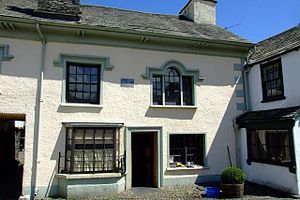
The Gallery (Photo credit: Wikipedia)
Links:
Gorgeous website (it includes information on visits to the World of Beatrix Potter in the Lake District):
http://www.peterrabbit.com/en/beatrix_potter/beatrixs_life
In Wikipedia:
http://en.wikipedia.org/wiki/Beatrix_Potter
The Beatrix Potter society:
http://www.beatrixpottersociety.org.uk/
The page of the Beatrix Potter Gallery in the National Trust:
http://www.nationaltrust.org.uk/beatrix-potter-gallery/
Very appropriately ‘Visit Cumbria’ dedicates a page to Beatrix Potter:
http://www.visitcumbria.com/beatrix-potter/
She also has a page at the Victoria and AlbertMuseum website:
http://www.vam.ac.uk/page/b/beatrix-potter/
Their biography is also very good and has excellent photographs:
http://www.vam.ac.uk/content/articles/b/biography-beatrix-potter/
Beatrix Potter’s Garden in Perthshire:
http://www.perthshire.co.uk/index.asp?pg=231
Her page at the Tate:
http://www.tate.org.uk/art/artists/helen-beatrix-potter-1794
Beatrix Potter in You Tube:
www.youtube.com/playlist?list=PL3887DA12301CFBEA
It seems the Japanese also love Potter:
http://www.bbc.co.uk/news/uk-england-cumbria-24625202
Her house is now Grade II listed building:
Her page in IMDB (movies and cartoons based on her stories and some about her):
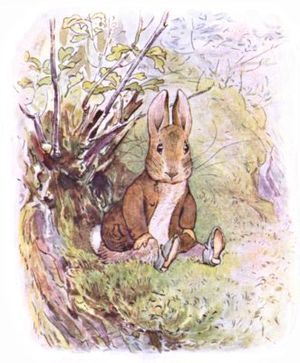
Benjamin Bunny (Photo credit: Wikipedia)
Works:
This is the author’s page in Amazon. I suspect that due to the illustrations the books are not free on this site although some are very cheap.
http://www.amazon.co.uk/Beatrix-Potter/e/B001HCRWI8/
Free books by Beatrix Potter in Project Guttenberg (there are 25 including two in audio format):
http://www.gutenberg.org/ebooks/author/292
Here in e-pubbud:
http://www.epubbud.com/search.php?q=Beatrix%20Potter
Many thanks for reading, and if you’ve enjoyed it, don’t forget to like, share, comment, and of course CLICK!
And as preparation and winding down for Christmas, from next week I’ll be reviewing and reposting some of the most visited posts.
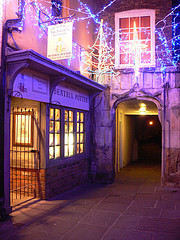
beatrix-potter-museum-christmas (Photo credit: JT Graphics)
Related articles
Beatrix Potter (alloverengland.wordpress.com)
Beatrix Potter (gardenrooms.typepad.com)
Beatrix Potter: I love! (ednastradioto.com)
Classics: Beatrix Potter (aliciafinnnoack.com)
Beatrix Potter, Beloved Children’s Author (pertainingto.com)
Beatrix Potter plaque marks her childhood home (kimbofo.typepad.com)








December 9, 2013
Family stories. Josep and Conrado Miret Musté, Mauthausen, the French Resistance and the Spanish Civil War.
As you know, my cousin Juan Molet is embarked on the task of researching and collecting information about our relatives, Josep and Conrado Miret Musté, who were exiled to France during the Civil War and ended up fighting with the French Resistance. In the past I’ve shared some of the documents that he has sent me. He recently sent me the document of a talk he gives to schools on the subject, and particularly about life in Mauthausen (where our great-uncle Josep Miret Musté was a prisoner during the War), and I thought it appropriate to share with you. I hope you find it informative and interesting. There are certain things that should not be forgotten.
Here I leave to my cousin Juan and his talk:
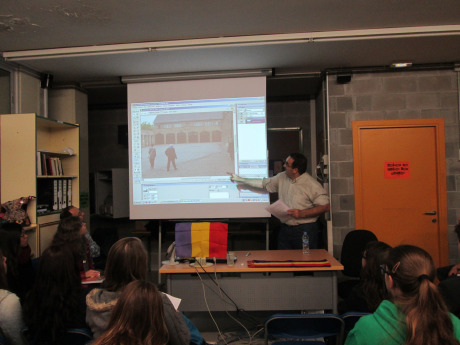
My name is Juan Molet Vila, I am a member of Amical Mauthausen and Amicale des Anciens Guerrilleros Espagnols in France ( FFI), my great-uncles were Josep Miret Musté and Conrado Miret Musté , the first died in Florisdorff , command Mauthausen on 17th November 1944 , shot by SS Hans Bühner, and the second in Paris on February 27th 1942 .
[image error]
Himmler and his entourage ascend the “steps of death” which led from the quarry to a road going up to the Mauthausen camp. (Photo credit: Wikipedia)
First I am going to speak of Mauthausen. On August 8th 1938 the first prisoners arrived from the Dachau camp. The location was chosen because of the nearby granite quarry; firstly prisoners worked constructing the camp and then extracting stone from the quarry. The same happened in the nearby camp of Gusen in 1940. Until late 1943 Mauthausen was a camp where they brought political and ideological opponents, the conditions of the detainees were extreme and it was a camp where there was a high mortality rate .
From 1943 the prisoners are also used as labor in the armaments industry and the number of prisoners increased. In late 1943 in Mauthausen – Gusen complex had about 14,000 prisoners and in March 1945 there were about 84000. From the second half of 1944 prisoners from other camps started coming to Mauthausen in response to the advance of Allied forces in the Second World War. This led to an overpopulation of the camp and living conditions became much harder.

Estelades a Mauthausen (Photo credit: Wikipedia)
In the complex there were Spanish prisoners, Austrians, Germans, French, Italians, Poles, Soviets, Hungarians, Jews…In total there were prisoners of over 20 nationalities. Between the opening of the field and its release by the U.S. military it is calculated that by the field passed 200,000 deportees.
Significantly, Mauthausen was not an extermination camp, it was a labour camp and most of the prisoners died because of their hard labour, because they were not fed properly for the work they did and sanitary conditions were very poor. Prisoners’ trades and skills were the main reasons determining their chances of survival.
Causes of death in the camp were beatings, bullets, by injection, some froze to death, by using the gas chamber, but most died from the exploitation of their labour . In the Mauthausen – Gusen complex 100,000 prisoners died, most of them in the four months before his release on May 5th, 1945.

English: Survivors of the Mauthausen-Gusen concentration camp shortly after their liberation. Deutsch: Überlebende des Konzentrationslagers Mauthausen-Gusen kurz nach ihrer Befreiung. (Photo credit: Wikipedia)
The Nazis deported some 15,000 Spanish Republicans, of which 7,200 went to Mauthausen, 4,800 were killed and 2,400 survived.
Portrait à tirer MIRET
Conrado Miret Musté was born in Barcelona on April 15th 1906 and died in Paris on February 27th 1942, in Prison de la Santé. He was a member of the Popular Army of the Republic, with the rank of Major in 1938. After the victory of General Franco he was exiled in France, where he was the first Chief of the armed groups in the MOI (Immigrant Manpower), actively fighting the Germans in Paris and arrested for the first time in 1940, but he managed to escape. He was arrested again in Paris on February 12th 1942. He died after two weeks of interrogation. He was buried in a mass grave at the cemetery in Clichy (South of Paris), this mass grave was destroyed after the end of the Second World War and now his whereabouts are unknown. Recently documents certifying his death have been found in France and he has been named Honourably Dead for France in Paris on August 25, 2013.
Josep Miret Muste 1939
Josep Miret Musté was born in Barcelona on September 14, 1907, studied at the Escola Treball (School of Labour), graduating at age 18, here he developed his progressive ideals and he focused on the active struggle against the dictatorship of Primo de Rivera. During the Second Republic he joins the Unió Socialista de Catalunya (Socialist Union of Catalonia), becoming the head of the Youth of the party. On the 23rd July 1936 the party was one of four who founded the P.S.U.C. (Partit Socialista Unificat de Catalunya, Socialist Unified Party of Catalonia, a communist nationalist party). He became Counselor of Procurements for War of the Generalitat (the National Government of Catalonia) in 1937, but left the office to go to the front, as Commissioner Delegate of War in the Third Division, participating in the battles of Belchite, Mediana, Huesca and the Ebro
After the war he goes into exile with his wife Cecilia. During the journey, his son Josep was born. He was a prisoner in French camps until he could reach Paris. There, with his brother Conrado, he joined the French Resistance, and both were involved in acts of sabotage against the German occupation. At this time his wife Cecilia and son return to Barcelona because she does not want to live through another war.
He was arrested in Paris on 30th November 1942, at the apartment of his companion from the French Resistance, Lily Brumerhurst. He was transferred to Mauthausen, where he joined the underground organization of the PSUC. In the camp he finds out that Lily is pregnant and his daughter, whom he will never know, is well. This child currently resides in Australia.
In the camp Josep and other comrades do active work to help the prisoners, taking pictures, and becoming involved in sabotages and escape attempts.
He is wounded in an allied bombing in the Florisdorf Armaments Factory where he worked, and SS Hans Bühner finishes him off with a bullet to the head.
We can say that Josep and Conrado Miret Musté have begun to receive recognition by the authorities of the French Republic at the request of the Amicale of Spanish Guerilleros in France. We cannot say the same has happened in Catalonia and Spain where they remain two unknown characters, although Josep Miret Musté has received some recognition from the city of Barcelona, where he has a street named after him, at the request of Amical Mauthausen.
It is, of course an honour to be related to them both, and I contribute my little grain of sand in Catalonia, Spain and France to try and bring attention and recognition to these two families, as well as to all those who participated in the Spanish Civil War, went into exiled, participated in World War II and then were forgotten by the victors of the Second World War. Only France welcomed them at the time, although many of them ended locked in concentration camps in 1939, others were persecuted, and after the Second World War (1944-1945) the French authorities of the moment completely abandoned the Republican fight, and of course, they suffered the forgetfulness and contempt of the Franco government in Spain.
Finally I want to say that if anyone is interested in exploring this topic in more detail, just let me know, right at the end of this act or through your Institute and I can provide more comprehensive information on the subject, thank you very much.
I will continue sharing the information Juan sends me, and if you want to contact him directly I am happy to act as go between.
Thanks to Juan for sharing his talk with us, and thank you all for reading, and if it was interesting, do not forget to share, to like, and comment.
From next week, as Christmas is quickly approaching, I will bring you a selection of classic post and various other things … And on January we’ll start with new post (and news! )
Related articles
Munich (aceeurotrip2013.wordpress.com)








Author Translator Olga
En este blog hablo de la escritura y de mis libros, pero también reseño los libros de otros autores, comparto trucos, consejos, novedades literarias e ideas varias. Mi blog es bilingüe y comparto posts en español e inglés ...more
- Olga Núñez Miret's profile
- 250 followers


